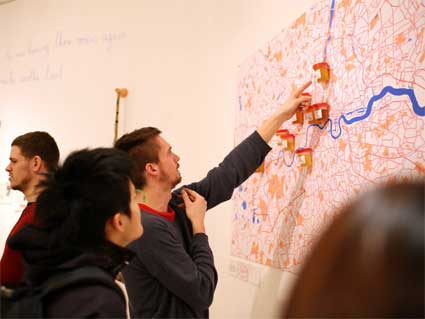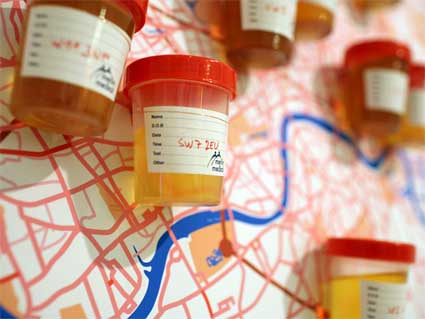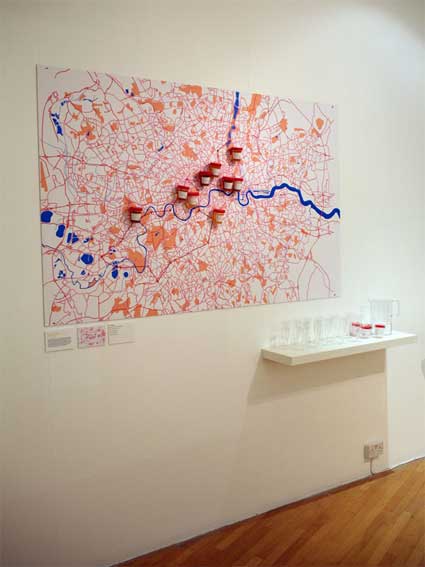One more from the work in progress exhibition at the Royal College of Art in London.
Tuur Van Balen, student of Design Interactions turned his attention to drinking water.
Water service companies add fluoride to the water to reduce tooth decay, in the UK, in the US and other countries. It has also been said that the army in some countries added bromide to drinking water in order to quell sexual arousal amongst male soldiers. Male fish in some area turn female because the oestrogen in birth-control pills ends up in the river.
 My City = My Body is part of ongoing research into future biological interactions with the city and more precisely into how the increasing understanding of our DNA and the rise of bio-technologies will change the way we interact with each other and our environment.
My City = My Body is part of ongoing research into future biological interactions with the city and more precisely into how the increasing understanding of our DNA and the rise of bio-technologies will change the way we interact with each other and our environment.
The first chapter of this exploration of new biological interactions is dedicated to Thames Water, London’s largest ‘drinking water and wastewater service company’. Making use of the work-in-progress-show at RCA, he offered tap water (kindly provided by Thames Water) and asked visitors to donate a urine sample along with their postcode. He added the samples and postcodes to a map of London which contains biological information.
Because i liked his project a lot and wanted to make sure i wouldn’t write anything too silly about it, i asked Tuur to give us more details about his research. I’m passing the microphone to him:
The installation / intervention in the show is part of a bigger, ongoing project called My City = My Body. I’m interested in how cities are not as much made up by streets and buildings as they are made up by our behaviour and experiences. (The London of a design-student, cycling around from Shoreditch to South-Ken is totally different from the London of a banker in a black cab with his blackberry and a loft in Notting Hill) These experiences are heavily mediated by technology, just look at the way mobile communication networks totally reshaped our cities.

What I’m interested in, is how future technologies might influence our urban behaviour. We’re on the verge of a new area, an area that relies on the understanding of our body and the understanding of our DNA. What does this mean for the cities of tomorrow? Will we have DNA-surveillance and discrimination? Bio-identities and communities? …
The biological map in the interim show was an ‘intervention’ using the show as a platform to get feedback on these ideas. By gathering urine samples, I want to make people think about how their biological waste contains information. Pissing in public might become like leaving your digital data up for grabs, spitting in the streets like leaving your computer unprotected on the internet.
Unfortunately, I was not allowed to test the urine samples in the show. As England is the Mecca of Health&Safety, it was a struggle which took me up to Senior Management to even exhibit my project in this form (“Bio-hazard, sir!”) Continuing this research, I’m trying to contact a laboratory to look at bacteria, how bacteria could be a possible way of transforming our biological waste into information (inspired by Drew Endy‘s BioBricks project) and what the consequences in our everyday lives could be…
Thanks Tuur!

Images of the project courtesy of Tuur van Balen.
